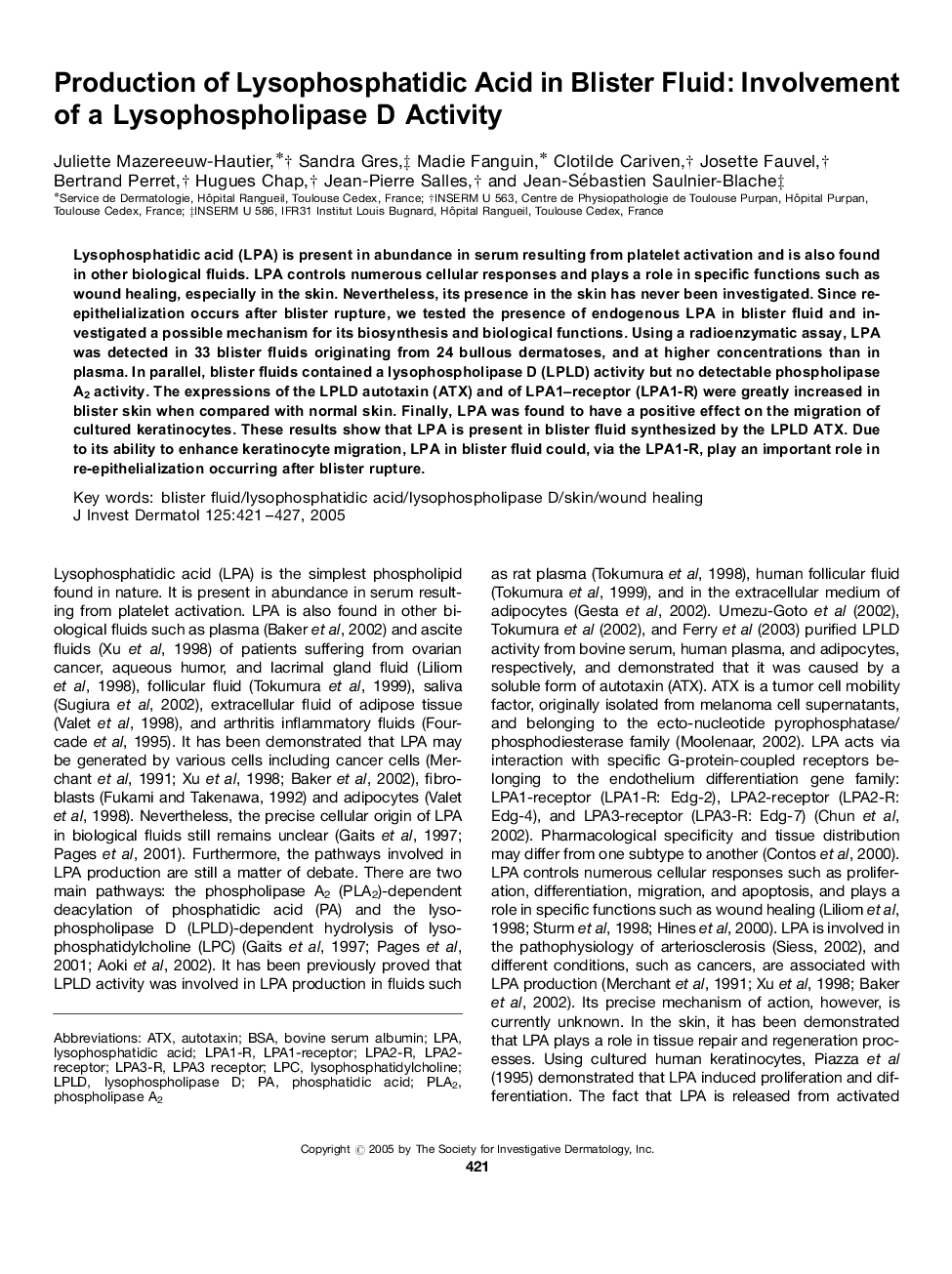| Article ID | Journal | Published Year | Pages | File Type |
|---|---|---|---|---|
| 9230235 | Journal of Investigative Dermatology | 2005 | 7 Pages |
Abstract
Lysophosphatidic acid (LPA) is present in abundance in serum resulting from platelet activation and is also found in other biological fluids. LPA controls numerous cellular responses and plays a role in specific functions such as wound healing, especially in the skin. Nevertheless, its presence in the skin has never been investigated. Since re-epithelialization occurs after blister rupture, we tested the presence of endogenous LPA in blister fluid and investigated a possible mechanism for its biosynthesis and biological functions. Using a radioenzymatic assay, LPA was detected in 33 blister fluids originating from 24 bullous dermatoses, and at higher concentrations than in plasma. In parallel, blister fluids contained a lysophospholipase D (LPLD) activity but no detectable phospholipase A2 activity. The expressions of the LPLD autotaxin (ATX) and of LPA1-receptor (LPA1-R) were greatly increased in blister skin when compared with normal skin. Finally, LPA was found to have a positive effect on the migration of cultured keratinocytes. These results show that LPA is present in blister fluid synthesized by the LPLD ATX. Due to its ability to enhance keratinocyte migration, LPA in blister fluid could, via the LPA1-R, play an important role in re-epithelialization occurring after blister rupture.
Related Topics
Health Sciences
Medicine and Dentistry
Dermatology
Authors
Juliette Mazereeuw-Hautier, Sandra Gres, Madie Fanguin, Clotilde Cariven, Josette Fauvel, Bertrand Perret, Hugues Chap, Jean-Pierre Salles, Jean-Sébastien Saulnier-Blache,
